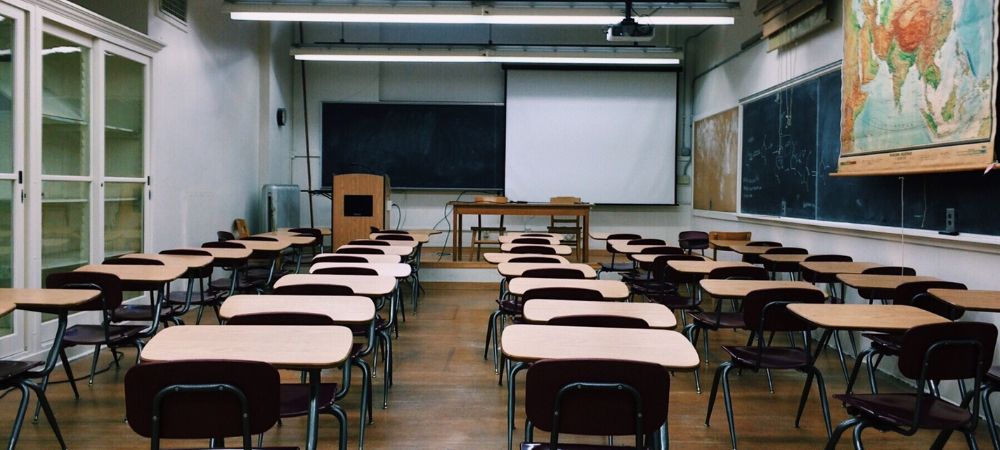

Virtual reality is an amazing tool that can enhance the learning experience in the classroom. There are many benefits to incorporating virtual reality into education.
For additional information click on currently. One of the main benefits is that it allows students to engage with the material in a more interactive way. Instead of just reading about something or watching a video, students can actually experience it firsthand through virtual reality. This helps them better understand and retain information.
Another benefit is that virtual reality can make learning more fun and engaging for students. Instead of sitting at their desks listening to a lecture, they can put on a headset and be transported to different worlds and time periods. This makes learning feel more like play than work, which can increase motivation and interest in the subject matter.
Additionally, virtual reality can help students develop important skills such as critical thinking, problem-solving, and creativity. By immersing themselves in different scenarios and environments, students are forced to think outside the box and come up with innovative solutions.
In conclusion, incorporating virtual reality into the classroom has numerous benefits for both teachers and students alike. It enhances learning experiences, makes lessons more engaging, and helps develop important skills. So next time you're considering ways to spice up your lesson plans, why not give virtual reality a try? Trust me, you won't regret it!
Virtual reality has a huge impact on student engagement and learning outcomes in education. It's like, students are more motivated to participate in lessons when they can experience things in a virtual world instead of just reading about them in a textbook. This makes learning more fun and interactive, which leads to better retention of information.
When students use virtual reality, they can actually see and interact with different concepts and ideas, rather than just hearing about them from a teacher. This helps them understand the material better and remember it for longer periods of time. In addition, virtual reality allows students to explore subjects in a hands-on way, which can improve their critical thinking skills.
Overall, the use of virtual reality in education is super beneficial for students. It helps them engage more with the material and ultimately leads to better learning outcomes. So yeah, virtual reality definitely has a positive impact on student engagement and academic success in school.
In the United States, public college instructors spend approximately $479 expense every year on class products, highlighting financing voids.
Internationally, over 260 million children and youth ran out college as of 2018, underlining consistent obstacles in international education and learning accessibility.
Montessori education and learning, which highlights independence and liberty within limitations, has actually been embraced in over 20,000 schools worldwide, including 5,000 in the U.S. alone.
Educational modern technology financial investments got to over $18.66 billion in 2019, showing the expanding emphasis on digital understanding devices.
As we look ahead to the future, it's clear that technology will continue to have a profound impact on education.. From virtual reality to artificial intelligence, there are countless innovations that will shape the way students learn and teachers teach.
One major trend in educational technology is personalized learning.

Posted by on 2024-05-02
Parental involvement in early childhood education initiatives is so crucial!. It can have a huge impact on a child's development and success later in life.

Posted by on 2024-05-02
When it comes to promoting diversity and inclusion in schools, evaluating progress and making adjustments is key to ensuring continued commitment.. It's important that we constantly assess how we are doing and take steps to improve if needed.

Posted by on 2024-05-02
Virtual reality has been used successfully in educational settings to enhance learning experiences for students. One example of this is the use of VR simulations in medical schools, where students can practice surgeries and other procedures in a realistic virtual environment. This allows them to gain hands-on experience without the need for expensive equipment or putting patients at risk.
Another successful implementation of VR in education is the use of virtual field trips. Students can explore ancient ruins, visit outer space, or dive into the depths of the ocean all from the comfort of their classroom. This provides a more engaging and immersive learning experience compared to traditional methods.
Furthermore, some schools have incorporated VR into language learning programs. Students can interact with native speakers in a virtual setting, practicing conversations and improving their language skills in a more authentic way.
Overall, the use of virtual reality in education has proven to be effective in enhancing student engagement and understanding. It provides opportunities for experiential learning that were not possible before, making it a valuable tool for educators looking to enhance their teaching practices.

Virtual reality in education has many challenges and limitations that can make it difficult to implement in classrooms. One of the main issues is the high cost of VR equipment, which can be prohibitive for many schools. Additionally, not all students have access to the technology needed to use virtual reality, making it difficult to ensure equal opportunities for all learners.
Another challenge is the limited content available for virtual reality education. While there are some educational programs and experiences available, they may not cover all subject areas or meet specific curriculum requirements. This can make it challenging for teachers to integrate virtual reality into their lessons effectively.
Furthermore, there are concerns about the potential negative effects of using virtual reality in education. Some research suggests that excessive use of VR technology could lead to eye strain or other health issues. Additionally, there are worries about how immersive virtual experiences could impact students' ability to differentiate between real life and virtual environments.
Despite these challenges and limitations, many educators see the potential benefits of using virtual reality in education. Virtual reality can provide engaging and interactive learning experiences that help students better understand complex concepts and improve retention rates. With proper planning and support, virtual reality has the potential to revolutionize education and enhance student learning experiences.
The future of virtual reality technology in education is lookin' bright! There ain't no denyin' that VR has the potential to revolutionize the way students learn and engage with content. With the ability to transport learners to different worlds and scenarios, VR can make learnin' more interactive and immersive.
One of the biggest opportunities for VR in education is its ability to cater to different learnin' styles. Students who struggle with traditional teachin' methods can benefit from hands-on experiences in a virtual environment. This can help them better understand complex concepts and retain information more effectively.
Another advantage of VR in education is its potential to make learnin' more fun and engaging. By gamifyin' lessons and activities, educators can capture students' interest and keep 'em motivated to learn. This can lead to improved academic performance and a deeper appreciation for learnin'.
Despite the excitin' possibilities that VR brings to education, there are still some challenges that need to be addressed. Cost remains a barrier for many schools lookin' to implement VR technology in their classrooms. Additionally, there may be concerns about student safety and screen time when usin' VR devices.
Overall, the future of virtual reality in education looks promisin'. With continued advancements in technology and increased access to VR resources, educators have an opportunity to transform the way students learn and prepare 'em for success in an ever-evolvin' world. Let's embrace this new era of learnin', y'all!
So, y'all are interested in integrating virtual reality into your teaching practices, huh? Well, lemme give y'all some recommendations on how to do that. First off, don't be afraid to try new things! Virtual reality can be a powerful tool for engaging students and enhancing their learning experience. Don't worry about making mistakes - that's all part of the learning process.
Secondly, make sure to do your research before diving in. There are tons of resources out there on how to effectively use virtual reality in education. Take advantage of them and learn from others who have already paved the way.
Another thing to keep in mind is to start small. You don't need to completely overhaul your teaching methods overnight. Start by incorporating virtual reality into one lesson or unit and see how it goes. This will help you build confidence and get comfortable with using this new technology.
Lastly, don't forget about training and support. Make sure you have access to technical support and training opportunities so you can continue to grow and improve as you integrate virtual reality into your teaching practices.
In conclusion, integrating virtual reality into your teaching practices can be a game-changer for both you and your students. Don't be afraid to take the plunge, do your research, start small, and seek out support when needed. Good luck!